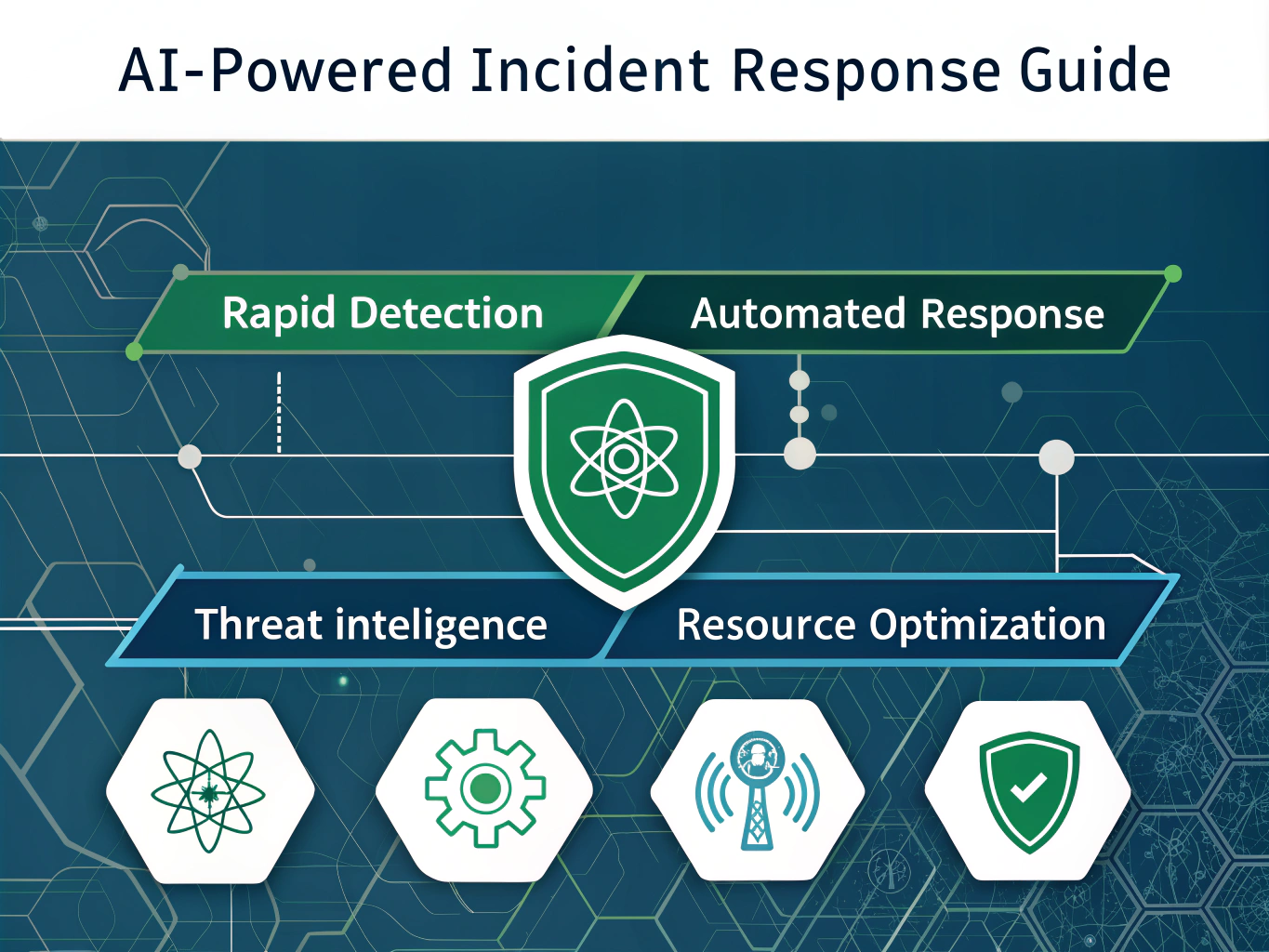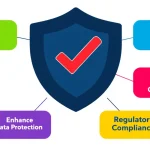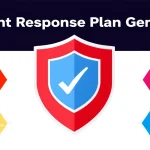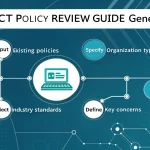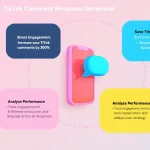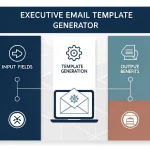AI Implementation Guide for Incident Response
Is this tool helpful?
How to Use the AI Implementation Guide for Incident Response Generator
Follow these steps to get the most from the AI Implementation Guide for Incident Response Generator:
- Organization Name (Optional): Enter the name of your organization. This helps tailor the guide to your company’s identity. For example, you might use DataSecure Analytics or NextGen Cyber Defense.
- Describe Existing Incident Response Framework (Optional): Briefly outline your current incident response setup. Sample inputs could be COBIT-based security framework or Custom procedures aligned with MITRE ATT&CK.
- Specify Challenges or Requirements (Optional): Detail any particular obstacles or needs you face while implementing AI. Examples include Real-time integration with multi-cloud environments or Automated incident escalation for insider threats.
- Generate Your Guide: Click the “Generate AI Implementation Guide” button to receive a customized plan that fits your organization’s context and needs.
- Review Your Guide: The generated AI implementation strategy will display below the form. Review it carefully to understand the recommended steps.
- Copy and Use the Guide: Use the copy option to save and share the guide within your team for effective AI adoption in incident response.
Understanding the AI Implementation Guide for Incident Response Generator
This tool helps cybersecurity professionals create personalized strategies to integrate artificial intelligence into their incident response workflows. Its main purpose is to simplify planning, address specific organizational challenges, and enhance efficiency in handling security incidents.
Using this generator, you quickly get a tailored guide that considers your existing frameworks, unique challenges, and organizational context. This targeted approach helps you implement AI technologies effectively, improving your ability to detect, analyze, and respond to cyber threats faster and with greater accuracy.
Why AI Matters in Incident Response
The rapidly evolving cyber threat landscape demands more responsive and intelligent security measures. AI enhances incident response by enabling:
- Faster detection and accurate threat analysis
- Automated prioritization and triage of security events
- Advanced pattern recognition and identification of anomalies
- Proactive defense through incident prediction
- Simplified and streamlined incident response workflows
Implementing AI reduces your mean time to detect (MTTD) and mean time to respond (MTTR), minimizing damage from attacks and improving overall security posture.
Practical Uses of the AI Implementation Guide Generator
This generator is designed to support various industries and organization sizes by providing custom AI integration strategies that suit specific needs. Here are some example use cases:
1. Banking and Financial Services
- Detect anomalous transactions using machine learning models
- Automate incident triage with AI-driven chatbots
- Analyze threat intelligence feeds with natural language processing
These measures reduce response times and improve fraud detection.
2. Healthcare Sector
- Use AI-powered behavior analytics to monitor access to patient records
- Automate threat hunting with machine learning to locate data exfiltration attempts
- Develop incident playbooks that comply with healthcare regulations like HIPAA
This approach strengthens data protection and regulatory compliance.
3. E-commerce Platforms
- Deploy AI-based DDoS attack detection and mitigation
- Identify and block bot-driven credential stuffing in real time
- Correlate customer complaints with security incidents automatically
These strategies improve system resilience during traffic spikes and protect customer data.
Key Benefits of Using the AI Implementation Guide Generator
Customized AI Integration Plans
Receive tailored AI implementation roadmaps that align with your organization’s current frameworks and specific challenges.
Save Time and Resources
Avoid lengthy research by quickly obtaining a comprehensive AI strategy, allowing your team to focus on execution.
Incorporation of Best Practices and Standards
Benefit from up-to-date cybersecurity methodologies and AI incident response standards included in the generated guides.
Scalability and Adaptability
Implement strategies that evolve alongside your organization’s growth and technology changes.
Improved Decision-Making
Make better technology, resource, and process decisions based on structured AI adoption frameworks.
Addressing Common Incident Response Challenges with AI
Managing Alert Overload
Leverage machine learning to filter and prioritize the flood of security alerts, focusing your team on the highest risk incidents.
Reducing False Positives
Improve detection accuracy by using AI behavioral analysis, lowering wasted effort on false alarms.
Speeding Up Incident Response
Automate key response steps like triage, containment, and reporting for faster resolution.
Enhancing Threat Intelligence
Integrate AI-driven intelligence gathering to stay ahead of new threats and adapt defenses proactively.
Closing Skills Gaps
Augment your security team with AI tools that extend their capabilities and optimize workload.
Frequently Asked Questions
What types of organizations benefit most from this tool?
Organizations of all sizes and sectors can use this generator. It adapts to your existing security posture and needs, whether you’re a startup or a large corporation.
Do I need advanced AI knowledge to use the guide generator?
No advanced AI expertise is required. The tool delivers clear, actionable steps suitable for professionals with basic AI and incident response understanding.
How often should I update my AI implementation strategy?
Regular updates are essential—at least annually or after major infrastructure or threat landscape changes. Use the generator to refresh your plan as needed.
Can this guide assist with regulatory compliance?
Yes, it incorporates recommendations to meet standards like GDPR, HIPAA, or PCI DSS based on your industry and region.
What if my organization already uses AI in incident response?
Simply mention your current AI usage in the form, and the guide will offer ways to optimize and expand your existing tools.
Conclusion: Strengthen Your Cybersecurity with AI
The AI Implementation Guide for Incident Response Generator helps you adopt AI effectively to improve your cyber defense. It equips you to:
- Boost threat detection and response speed
- Optimize security team resources
- Stay prepared against evolving cyber threats
- Meet regulatory compliance more efficiently
- Build a resilient, adaptive incident response strategy
Using this tool puts you in a stronger position to defend your organization in today’s fast-changing cybersecurity environment.
Important Disclaimer
The calculations, results, and content provided by our tools are not guaranteed to be accurate, complete, or reliable. Users are responsible for verifying and interpreting the results. Our content and tools may contain errors, biases, or inconsistencies. Do not enter personal data, sensitive information, or personally identifiable information in our web forms or tools. Such data entry violates our terms of service and may result in unauthorized disclosure to third parties. We reserve the right to save inputs and outputs from our tools for the purposes of error debugging, bias identification, and performance improvement. External companies providing AI models used in our tools may also save and process data in accordance with their own policies. By using our tools, you consent to this data collection and processing. We reserve the right to limit the usage of our tools based on current usability factors.
